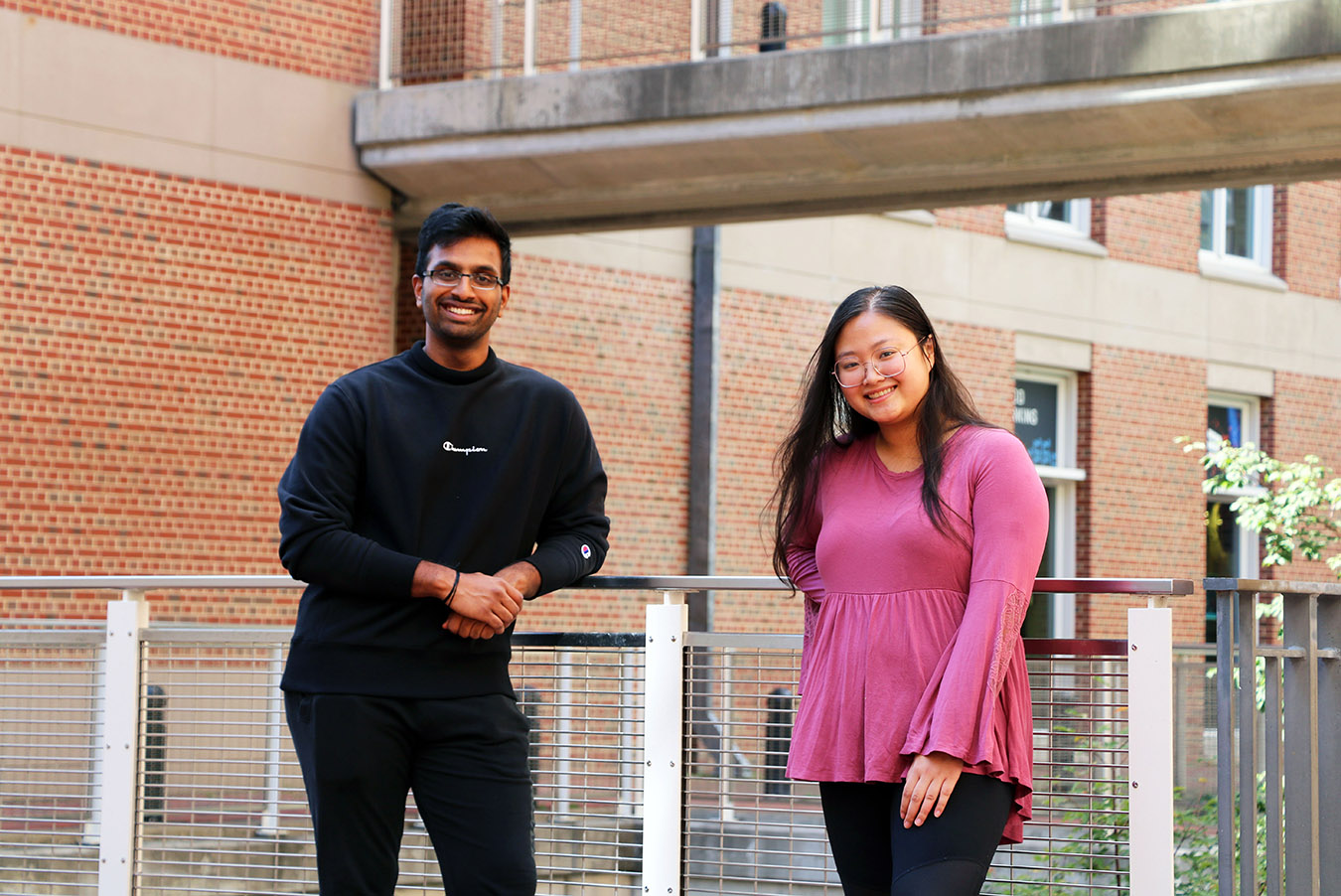
Research Spotlight: Innovation Powered by Collaboration
October 20, 2020
Q: How did you first find this research project and begin working together?
Batchu: I joined the Sode lab in my sophomore year. I looked at a lot of BME faculty and saw that Dr. Koji Sode was doing a lot of interesting things that weren’t being done by other labs, specifically with self-powered devices. We met to discuss our interests, and I started working on enzyme engineering, which eventually led to device engineering.
Le: I heard about this lab from Kartheek when I was looking for biochemistry research opportunities the summer after sophomore year. He told me that the research within the lab involved a lot of biochemistry, such as enzyme engineering, so I reached out to Dr. Sode, and I guess the rest is history.
Q: What is the purpose of your current project?
Le: Basically, this project is focused on building a device that can be implanted into or attached to the body and powered by an enzyme that is engineered.
Batchu: The real end goal of what we’re trying to accomplish is to create sensors for artificial organs. An artificial organ has a sensing component and a drug administration component. In order to administer something like a drug or administer some molecule, you need to know how much of it is already in the body. That’s why we are focused on building the sensor first, before we make any device that releases drugs.
Q: What is enzyme engineering?
Batchu: Enzyme engineering is just modifying the enzyme’s physical and chemical properties into the ideal properties for a particular application – in our case, for sensors. A typical enzyme in your body, called a wild type enzyme, has a limited lifespan and only works for certain types of reactions, but you can engineer it to make it more useful. Our current project works with wild type lactate oxidase, which creates that burning sensation from lactic acid buildup in your muscles when you exercise. That enzyme isn’t very stable, so we introduced a di-sulfide bond to make it more stable and reliable for powering a biosensor. We also adjusted the enzyme to remove its oxygen activity. You don’t want oxygen activity in a biosensor, because the oxygen in your blood might interfere with your experiments and sensor functionality.
Le: A more physical explanation is that we look at the amino acid layout of the enzyme, where each amino acid correlates to each portion of the enzyme. Then we can target the locations we want to change and modify it. For example, with lactase oxidase, an amino acid near the active site was targeted and changed into a lysine residue to facilitate arPES modification.
Q: How does your engineered enzyme power your sensor?
Batchu: The enzyme catalyzes a reaction, generating a flow of electrons that we can harness and absorb into an electrode. The electrode calculates the amount of electrons that have been flowing and gives a signal that can be correlated back to the actual concentration of your biomolecule. Then we can calculate, based on the activity, how much of a particular molecule is in your body.
Q: What benefits have you seen from bringing your different fields of study to this project?
Le: Interdisciplinary collaboration is very important, because no one person can master everything. It’s much more effective to bring together people with knowledge in different fields to work towards a common goal, because no one can create this on their own.
Batchu: We all have our own specializations, and it’s really hard to look beyond your own field and think about the bigger picture unless you are working with someone with a different knowledge base. The amount of knowledge I have about the actual chemical reactions or biological reactions is nothing compared to Dr. Sode or our postdoc, but I know a lot about circuitry. In this lab, fewer people are focused on the actual building of the device circuitry components, so that’s been a helpful skill to contribute.
Q: What makes you most proud about your work on this project?
Batchu: When I was in high school, I actually wrote in my college application essay that I wanted to make a completely self-powered device. I never expected to have that opportunity, so to construct a device with no wires and no external power source brought me great joy. It took hours and hours of work, so seeing everything come together and actually work – visualizing the fruits of your labor – is definitely the most rewarding aspect.
Le: I am most excited about the potential future applications of this device on the detection of other molecules in the body. We’ve both branched out from our original enzyme to look at molecules that can potentially track depression and Alzheimer’s, so this one sensor can really be used for a lot of different things.
Batchu: Thy brings up a great point. Our main success wasn’t necessarily getting our device to work; it was generating a sensing platform that can be used for practically anything. If you can find an enzyme, and you can engineer it, then you can use this foundation for nearly any sort of sensing.
